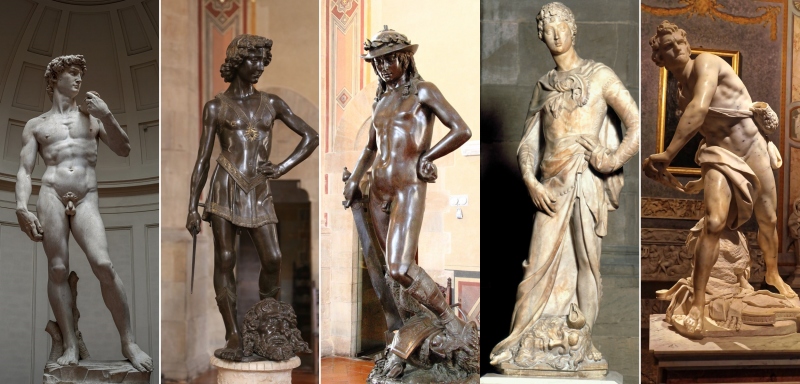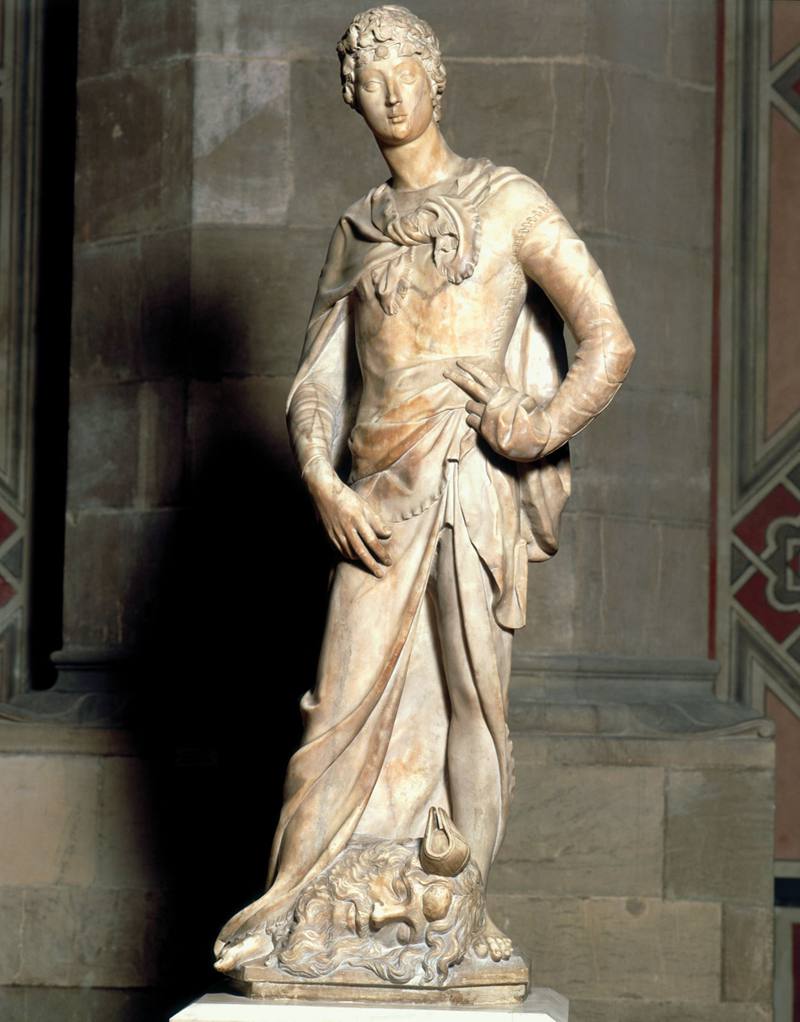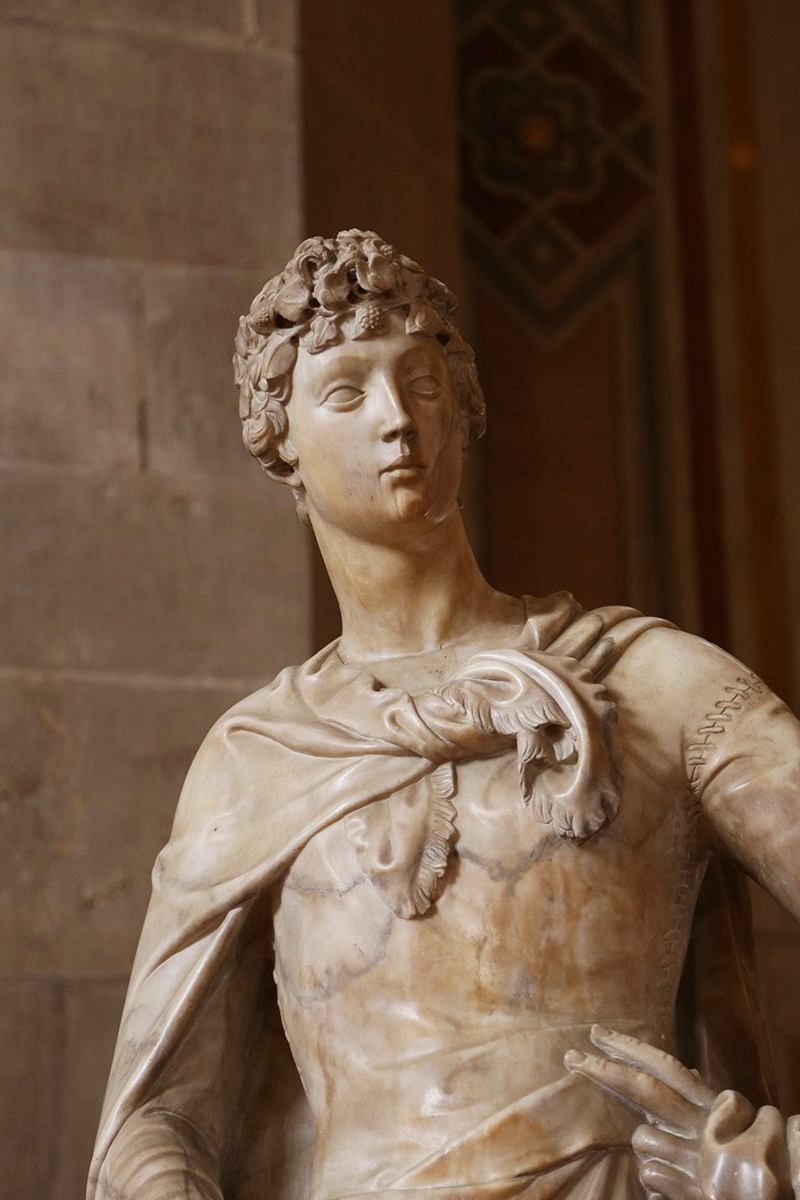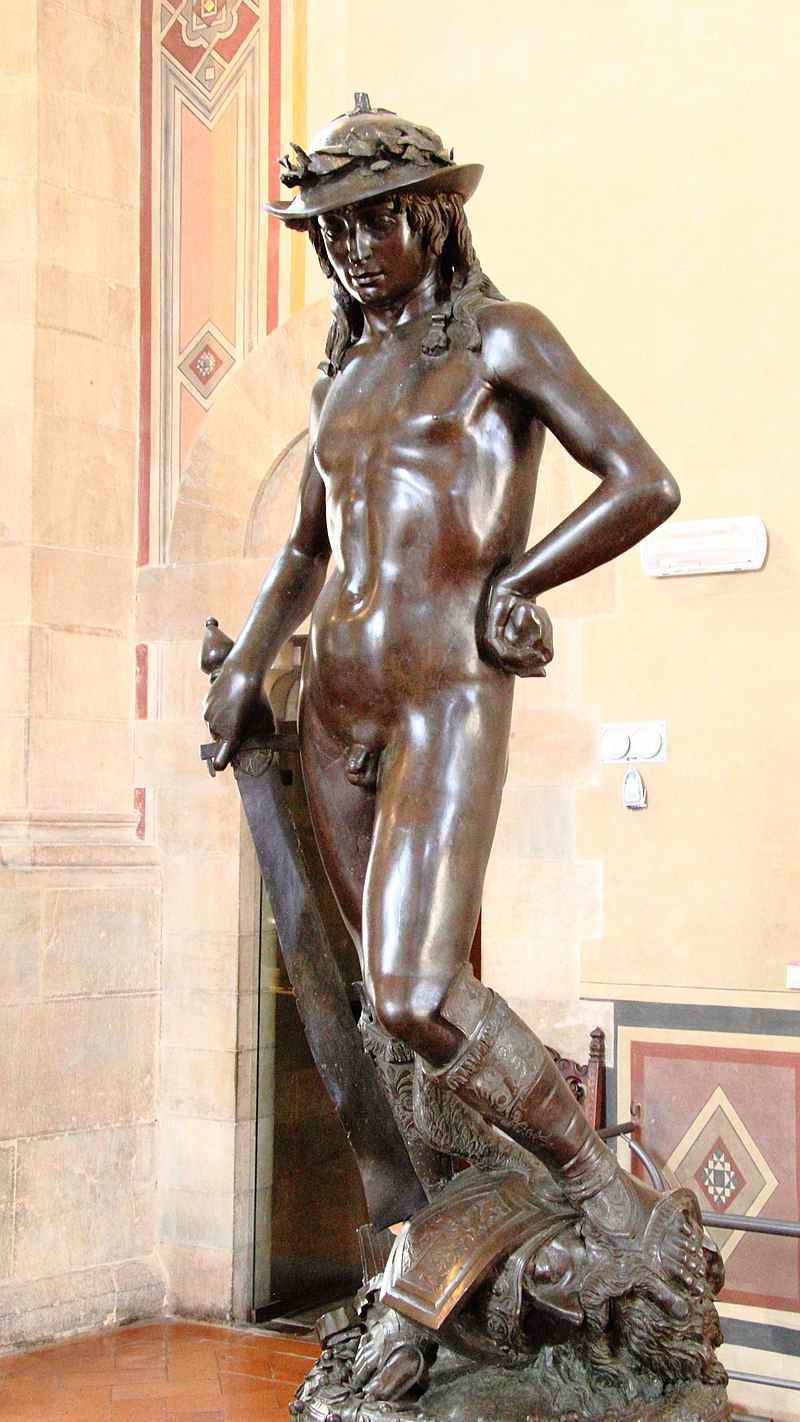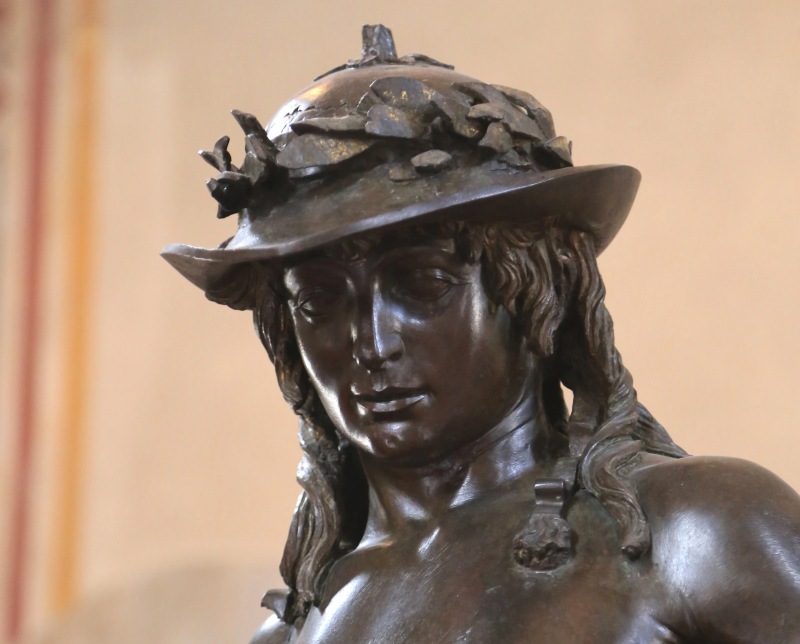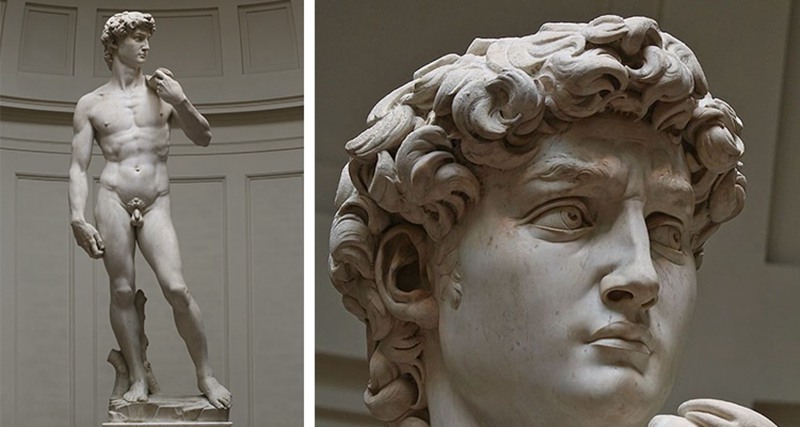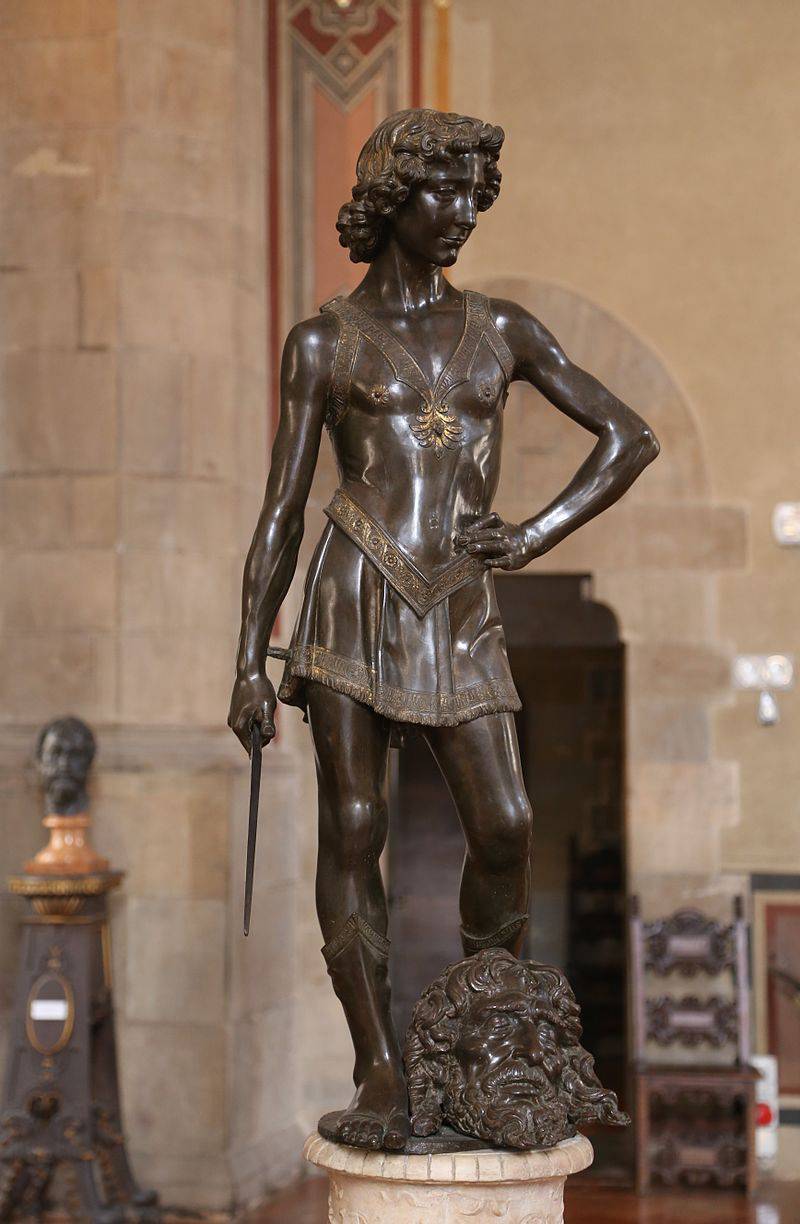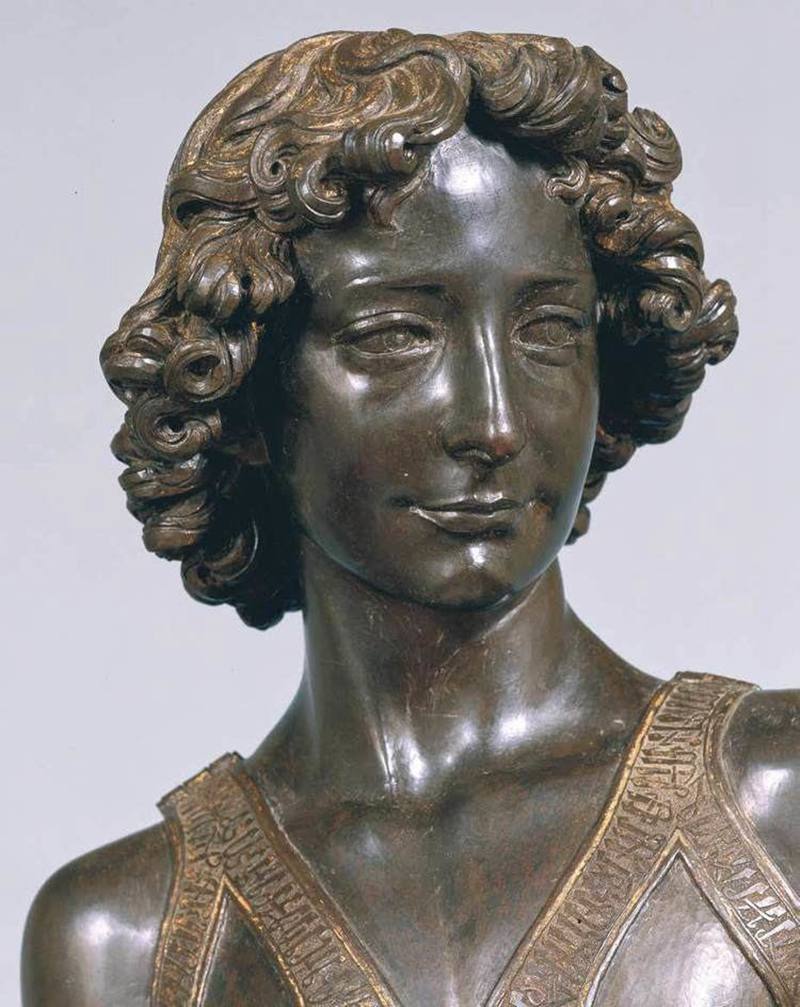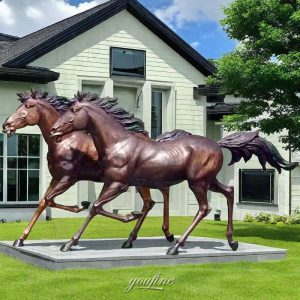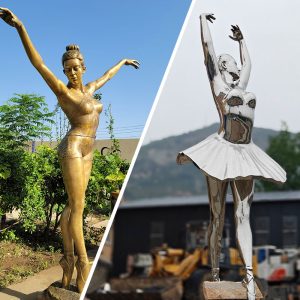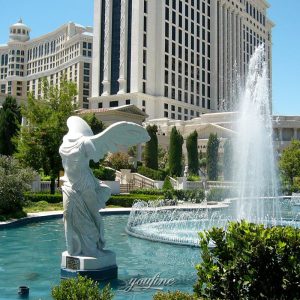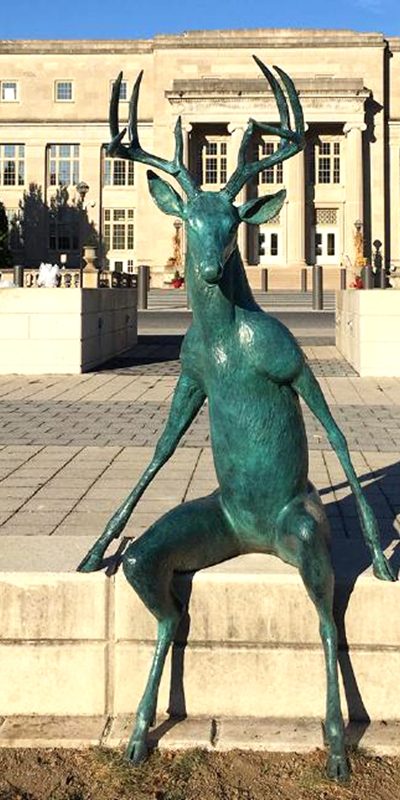The Statue of David has always been a world-famous statue, not only because of the inspirational story of King David himself, but also because of the fascinating details of the sculpture. Most people buy replicas of David statues to keep at home because of their appreciation of art.
David is a biblical figure, the patriarch of the Jewish people. He was originally a shepherd. In the war between the Israelites and the Philistines, he killed the Philistine giant Goliath with flying stones and won the war for the Israelites. Do you know? There are many works of art on this subject in history, including five famous David sculptures. Next, I will introduce them to you one by one.
Donatello’s Marble David Statue
Donatello’s marble David sculpture was created between 1408 and 1416, when the sculptor was in his early 20s and David was a muscular young man. This David’s age is close to the correct age for boys in the Bible. The clothes were studied in detail, and at the foot of the statue lay the decapitated head of Goliath.
(Museo Nazionale del Bargello, Florence. Height 191.5 cm.)
The artist’s depiction of David was after he had already become king, not when he was young, but Donatello decided to make him very young and childlike, somehow giving David the sensibilities of a regal woman. His face is also very androgynous, in stark contrast to the resolute masculinity of Goliath at David’s feet. Overall, the piece has a soft and feminine feel to it.
Donatello’s Bronze David Statue
The first is a bronze statue of David by Donatello around 1440. This statue is the first nude statue since the Middle Ages. It has been placed in the central courtyard of the old Medici house and appears repeatedly in the “Medici” TV series. Donatello’s David looks like a woman, and some say it’s because Donatello himself is gay. This doesn’t make much sense. Does homosexuality necessarily make men feminine? In fact, Donatello’s David is a child, not yet fully developed, and it makes sense that his body is more feminine. Donatello was one of the pioneers of the Renaissance, and he also created the first statue of a general on horseback after the Middle Ages. Later, countless statues of horse-riding generals learned from him.
(Bargello Florence, h.158 cm)
It was the first unsupported bronze work of the Renaissance. The nudity and suggestive homosexuality of the statue, as well as the fact that David was wearing only boots and a hat, made the piece very controversial at the time. Some historians have questioned whether the statue depicts David, arguing that the helmet is more reminiscent of the Greek or Roman messenger gods Hermes or Mercury.
Michelangelo’s David Statue
Michelangelo’s marble David was created sixty years after Donatello’s David statue. How Michelangelo sculpted the Hand of David shows not only his skill but his attention to detail. Sculpting something like this requires a deep knowledge of the human body and what it really looks like, and Michelangelo had that. During the Renaissance, along with the revival of Greek thought, the golden ratio began to be used in art and architecture to create balance through specific measurements.
(Galleria dell’Accademia, Florence, Italy)
Unlike the other Davids, this is the first to be fully nude. Michelangelo also chose another moment in the story: the moment before action, when David is frowning and contemplating the task ahead. The statue is larger than the previous David statue because it was created to be placed on a high ground.
Bernini’s David Statue
Another hundred and twenty years later, Bernini built a third statue of David. In fact, Bernini’s David is the most realistic and powerful. Bernini’s “David” statue is magnificent. It exemplifies the use of interactive drama in much of Baroque art. Unlike the previously discussed David sculptures, this is the only one created outside of the Renaissance period. He pays so close attention to the tension of David’s body in action that anyone looking at the work can see the muscles in his front legs tense and the toes of his front feet curl as he props forward.
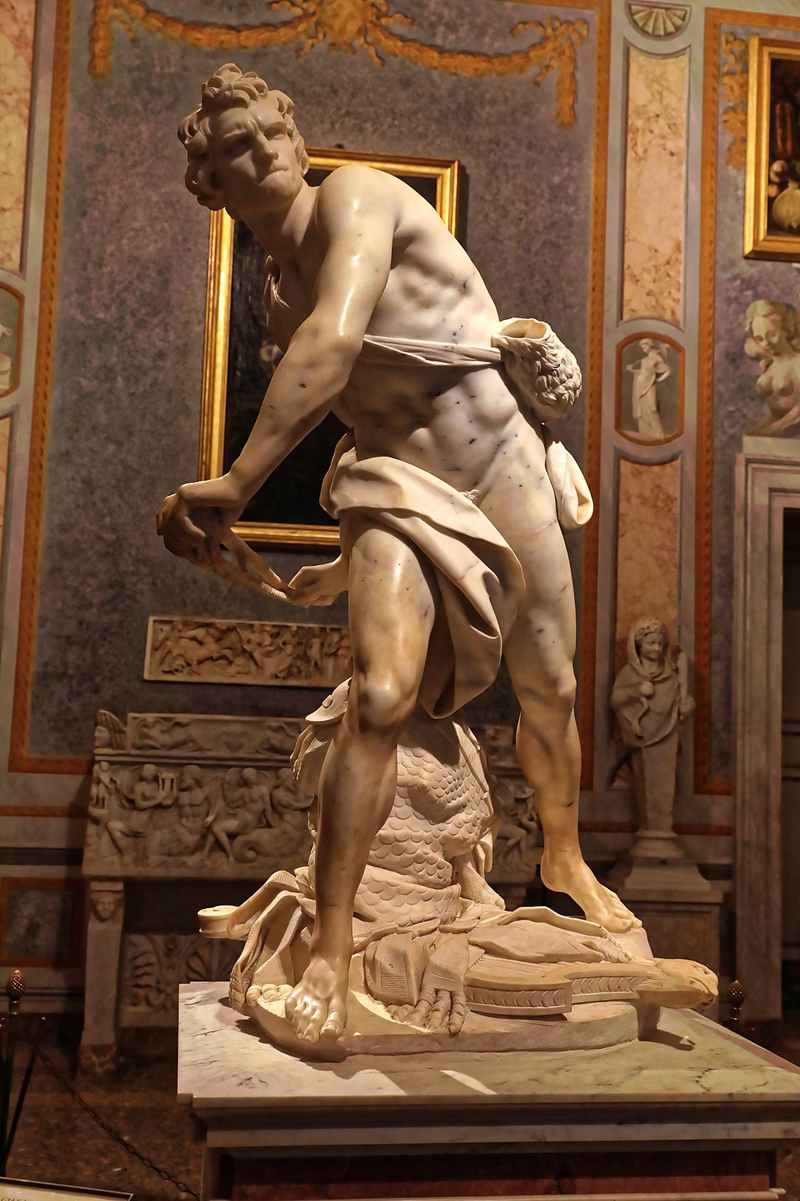
Verrocchio’s David Statue
The Bargello Museum has discovered another statue of a young David, this time by Verrocchio around 1475. The artist is said to have known Donatello’s version and chose to depict the same moment in the story, but with some stylistic differences. The man is said to have a short sword. It is said to have belonged to the nine-foot-tall giant Goliath. His hips protrude, creating a more open composition than the closed final position of Donatello’s David.
(Museo Nazionale del Bargello, Florence)
Like other Davidic sculptures of this period, Verrocchio also preferred to depict David as a young and lively boy rather than an idealized figure. The position of Goliath’s head has been a point of contention among art historians. At the National Gallery, the head was placed between David’s feet, as is the case at the Museo Nacional Bargello in Florence, Italy, where the statue is in its permanent collection. Another school of art historians holds that Verrocchio intended to place Goliath’s head on David’s right, pointing diagonally across the whole.
Summarize
In conclusion, although each David statue was created in the same city, within a hundred years of each other, and depicts the same figure, they are all unique. Even Donatello’s two works are quite different. How artists engage with the same subject matter in creative new ways makes this artistic lineage especially exciting. David sculptures, especially Michelangelo’s colossal works of art, are now less about politics than symbols of the city’s vibrant and exciting cultural history.
If you are interested in replicas of famous sculptures, you could contact YouFine, and they could provide you with satisfactory services.
1. 40 years of professional one-stop sculpture manufacturing, providing free customization services.
2. Use high-quality raw materials to provide customers with a perfect shopping experience.
3. Strict packaging process, using various shock-proof materials to wrap the sculpture.
4. Maintain long-term friendly cooperative relations with international transportation companies and purchase full insurance for customers.
